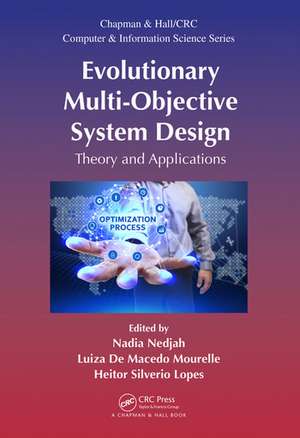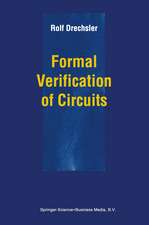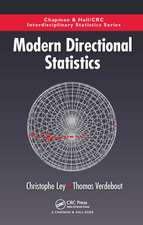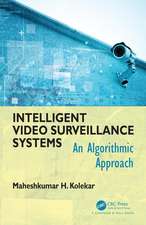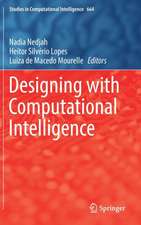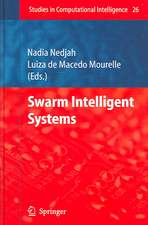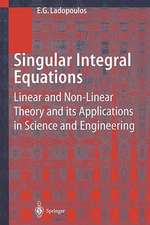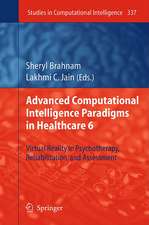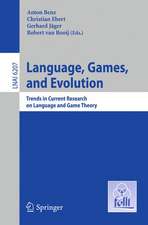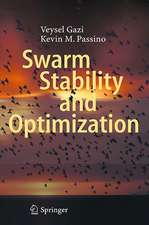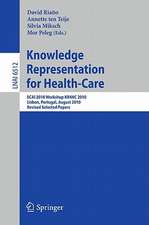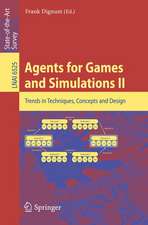Evolutionary Multi-Objective System Design: Theory and Applications: Chapman & Hall/CRC Computer and Information Science Series
Editat de Nadia Nedjah, Luiza De Macedo Mourelle, Heitor Silverio Lopesen Limba Engleză Hardback – 19 oct 2017
Generally, multi-objective engineering problems do not have a straightforward optimal design. These kinds of problems usually inspire several solutions of equal efficiency, which achieve different trade-offs. Decision makers’ preferences are normally used to select the most adequate design. Such preferences may be dictated before or after the optimization takes place. They may also be introduced interactively at different levels of the optimization process. Multi-objective optimization methods can be subdivided into classical and evolutionary. The classical methods usually aim at a single solution while the evolutionary methods provide a whole set of so-called Pareto-optimal solutions.
Evolutionary Multi-Objective System Design: Theory and Applications
provides a representation of the state-of-the-art in evolutionary multi-objective optimization research area and related new trends. It reports many innovative designs yielded by the application of such optimization methods. It also presents the application of multi-objective optimization to the following problems:
- Embrittlement of stainless steel coated electrodes
- Learning fuzzy rules from imbalanced datasets
- Combining multi-objective evolutionary algorithms with collective intelligence
- Fuzzy gain scheduling control
- Smart placement of roadside units in vehicular networks
- Combining multi-objective evolutionary algorithms with quasi-simplex local search
- Design of robust substitution boxes
- Protein structure prediction problem
- Core assignment for efficient network-on-chip-based system design
| Toate formatele și edițiile | Preț | Express |
|---|---|---|
| Paperback (1) | 305.97 lei 6-8 săpt. | |
| CRC Press – 30 iun 2020 | 305.97 lei 6-8 săpt. | |
| Hardback (1) | 946.61 lei 6-8 săpt. | |
| CRC Press – 19 oct 2017 | 946.61 lei 6-8 săpt. |
Din seria Chapman & Hall/CRC Computer and Information Science Series
- 8%
 Preț: 305.97 lei
Preț: 305.97 lei - 18%
 Preț: 952.91 lei
Preț: 952.91 lei - 18%
 Preț: 749.73 lei
Preț: 749.73 lei - 27%
 Preț: 276.35 lei
Preț: 276.35 lei - 20%
 Preț: 589.61 lei
Preț: 589.61 lei - 20%
 Preț: 532.68 lei
Preț: 532.68 lei - 25%
 Preț: 298.12 lei
Preț: 298.12 lei - 20%
 Preț: 433.62 lei
Preț: 433.62 lei - 20%
 Preț: 264.68 lei
Preț: 264.68 lei - 20%
 Preț: 479.88 lei
Preț: 479.88 lei - 34%
 Preț: 478.40 lei
Preț: 478.40 lei - 31%
 Preț: 264.89 lei
Preț: 264.89 lei - 26%
 Preț: 849.77 lei
Preț: 849.77 lei - 26%
 Preț: 265.85 lei
Preț: 265.85 lei - 29%
 Preț: 259.81 lei
Preț: 259.81 lei - 20%
 Preț: 513.32 lei
Preț: 513.32 lei - 20%
 Preț: 482.39 lei
Preț: 482.39 lei - 20%
 Preț: 986.39 lei
Preț: 986.39 lei - 33%
 Preț: 408.36 lei
Preț: 408.36 lei - 20%
 Preț: 442.41 lei
Preț: 442.41 lei - 33%
 Preț: 975.17 lei
Preț: 975.17 lei - 30%
 Preț: 1243.62 lei
Preț: 1243.62 lei - 30%
 Preț: 275.76 lei
Preț: 275.76 lei - 23%
 Preț: 288.56 lei
Preț: 288.56 lei - 32%
 Preț: 325.85 lei
Preț: 325.85 lei - 20%
 Preț: 378.53 lei
Preț: 378.53 lei - 31%
 Preț: 839.62 lei
Preț: 839.62 lei - 34%
 Preț: 1167.33 lei
Preț: 1167.33 lei - 35%
 Preț: 1061.32 lei
Preț: 1061.32 lei - 34%
 Preț: 1168.04 lei
Preț: 1168.04 lei
Preț: 946.61 lei
Preț vechi: 1154.40 lei
-18% Nou
Puncte Express: 1420
Preț estimativ în valută:
181.13€ • 189.12$ • 149.91£
181.13€ • 189.12$ • 149.91£
Carte tipărită la comandă
Livrare economică 05-19 aprilie
Preluare comenzi: 021 569.72.76
Specificații
ISBN-13: 9781498780285
ISBN-10: 1498780288
Pagini: 242
Ilustrații: 50
Dimensiuni: 156 x 234 x 20 mm
Greutate: 0.48 kg
Ediția:1
Editura: CRC Press
Colecția Chapman and Hall/CRC
Seria Chapman & Hall/CRC Computer and Information Science Series
ISBN-10: 1498780288
Pagini: 242
Ilustrații: 50
Dimensiuni: 156 x 234 x 20 mm
Greutate: 0.48 kg
Ediția:1
Editura: CRC Press
Colecția Chapman and Hall/CRC
Seria Chapman & Hall/CRC Computer and Information Science Series
Cuprins
Embrittlement of Stainless Steel Coated Electrodes. Learning Fuzzy Rules from Imbalanced Datasets using Multi-objective Evolutionary Algorithms. Hybrid Multi-Objective Evolutionary Algorithms with Collective Intelligence. Multiobjective Particle Swarm Optimization Fuzzy Gain Scheduling Control. Multiobjective evolutionary algorithms for smart placement. Solving Multi-Objective Problems with MOEA/D and Quasi-Simplex Local Search. Multi-objective Evolutionary Design of Robust Substitution Boxes. Multi-objective approach to the Protein Structure Prediction Problem. Multi-objective IP Assignment for Efficient NoC-based System Design.
Notă biografică
Nadia Nedjah, Luiza De Macedo Mourelle, Heitor Silverio Lopes
Descriere
Evolutionary multi-objective optimization (EMO) has emerged as a sub-discipline of multi-objective optimization, combining the fields of evolutionary computation and classical multiple criteria decision making. This field has applications in artificial intelligence, machine learning, and data mining. This book will present new trends, methods, algorithms, and applications in EMO for system design, featuring contributions from leading experts.
